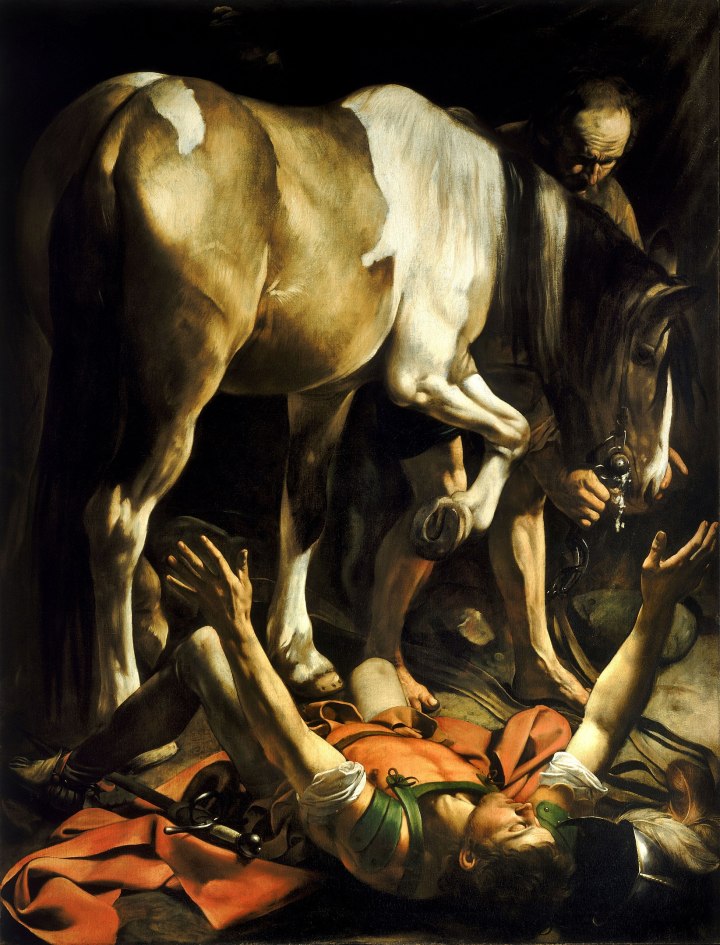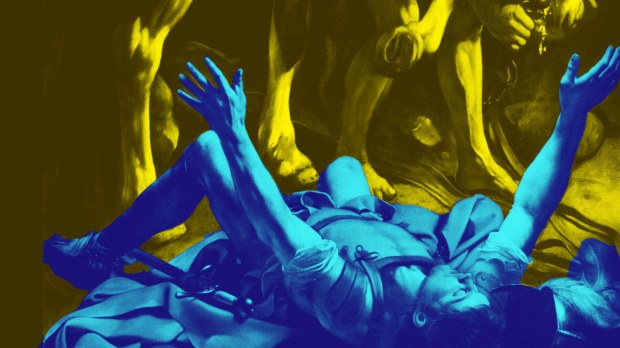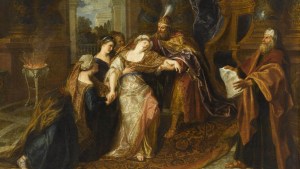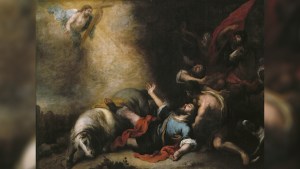Finding St. Paul (or rather Saul) falling off his horse in the Book of Acts while on his way to Damascus is an impossible task. This is not to say, however, that Caravaggio (and other great masters who have painted the passage popularly known as Paul’s Conversion) got it wrong. Whereas there is no mention of Paul riding any animal while traveling to Syria, biblical texts do not say he was traveling by foot either. It is simply not explicitly stated.
The fact that something is not explicitly stated in Scripture does not mean, however, that it did not happen. For example, there is not a single word attributed to St. Joseph in any of the four Gospels. But this silence cannot be interpreted as meaning he was mute, or that he kept a vow of silence. We do not find the Holy Family sharing a meal either, but that provides no grounds to assume they never ate together. We do not find any mentions of Jesus, as a kid, playing with his friends, but that doesn’t mean he stayed home all day helping Joseph or Mary with their respective chores.
Now, a passage in the book of Acts (Acts 22, 6-7) might suggest Paul actually fell from something, although not necessarily. Yes, it is commonly assumed that Rabbi Saul fell from his horse on the road to Damascus —an assumption reinforced over and over again by several artistic representations of the passage. And yet, the passage simply presents Paul saying “I fell to the ground” (epesa te eis to edaphos). Nowhere in the text do we find horses, donkeys, or any other means of transportation. The passage might just suggest Paul kneeled.

Actually, the three different passages referring to Saul’s miraculous conversion (Acts 9,3-4; 22, 6-7, 26, 12-14) coincide in saying that, upon seeing the light from heaven, he fell to the ground. This light is of the utmost importance, and there is a reason why Luke mentions it in two of the three accounts of Saul’s conversion. The passages read:
As I made my journey and drew near to Damascus, about noon a great light from heaven suddenly shone about me. And I fell to the ground and heard a voice saying to me, ‘Saul, Saul, why do you persecute me?’
Acts 22, 6-7
Thus I journeyed to Damascus with the authority and commission of the chief priests. At midday, O king, I saw on the way a light from heaven, brighter than the sun, shining round me and those who journeyed with me. And when we had all fallen to the ground, I heard a voice saying to me in the Hebrew language, ‘Saul, Saul, why do you persecute me?’
Acts 26, 12-14
Both passages mention the exact time of the day when the heavenly light that caused Saul to fall appeared: it was “about noon.” This seemingly irrelevant piece of information is rather key. Traditionally, some commentators argue Paul (or rather Luke, his scribe) felt the need to mention the event happened at midday to let the audience know this was not a decrease in visibility due to darkness. As it was broad daylight, he knew what was happening. But other commentators give a different explanation.
Some scholars claim Saul was more than likely not riding his horse because noon was an established time of prayer. In fact, Pharisees prayed three times a day, following the (alleged) custom of David, as read in Psalm 55 (“But I call upon God, and the Lord will save me. Evening and morning and at noon.” (Cf Psalm 55, 16-17)
Pious men would normally and traditionally recite prayers while standing on their feet, facing toward Jerusalem (Cf. Dan. 6, 10-11). It is then plausible that Saul, being a zealous, pious Pharisee, stopped to observe midday prayer while on the road to Damascus. That is, he might have been standing erect and facing south to Jerusalem when he was blinded by that heavenly light, and fell to the ground.



